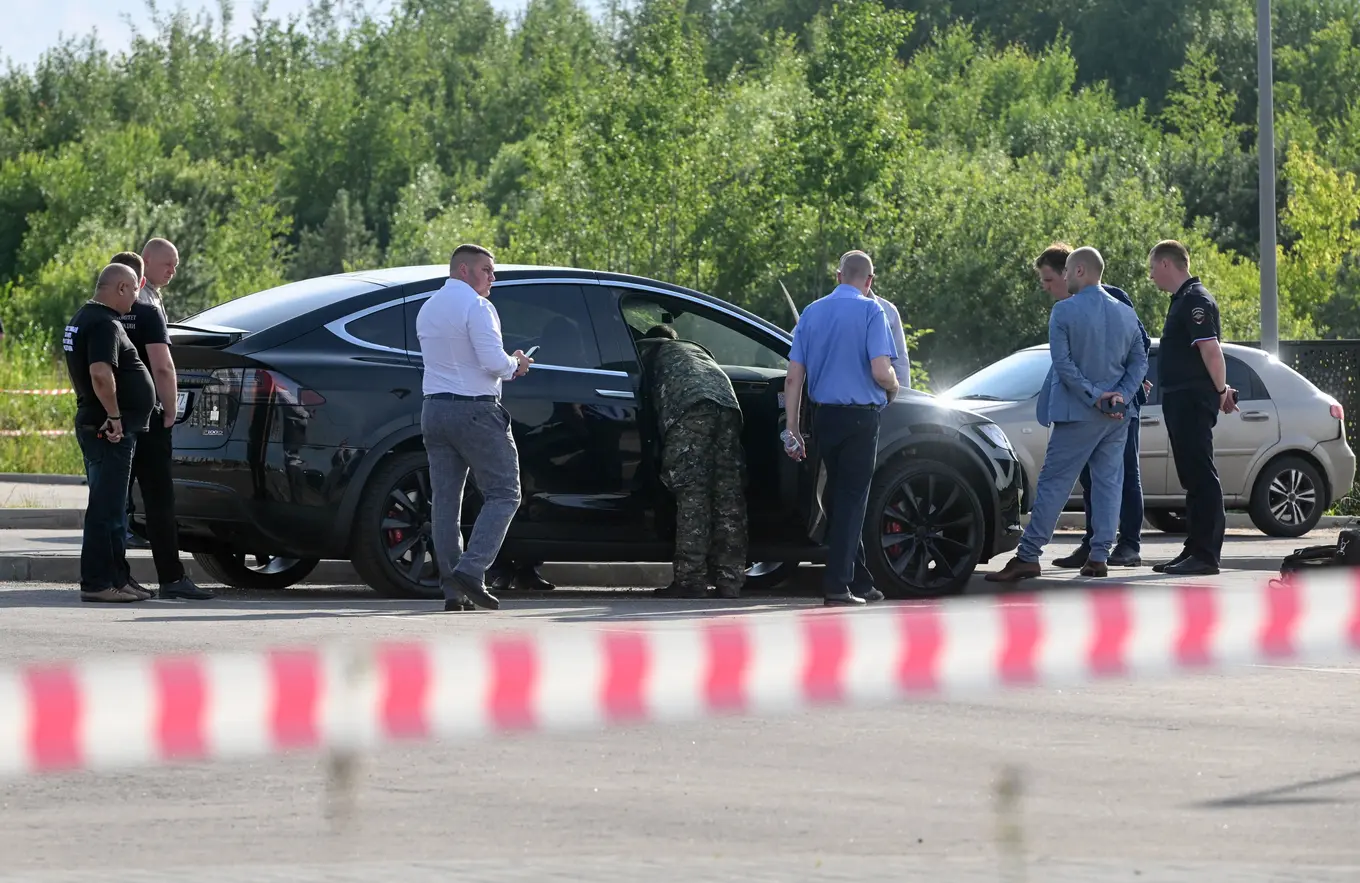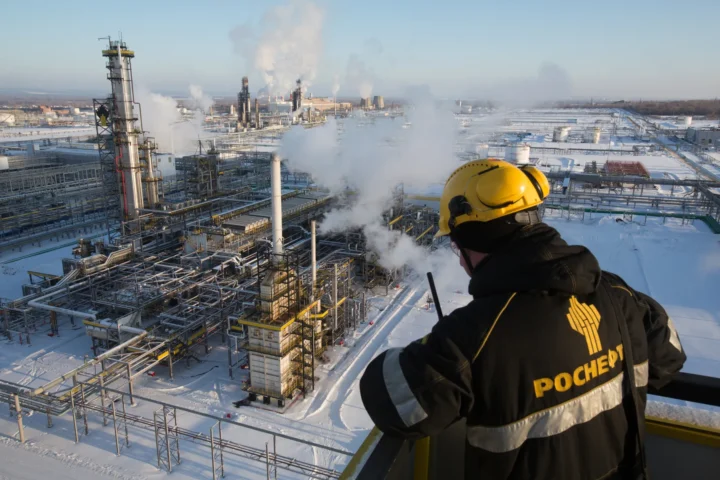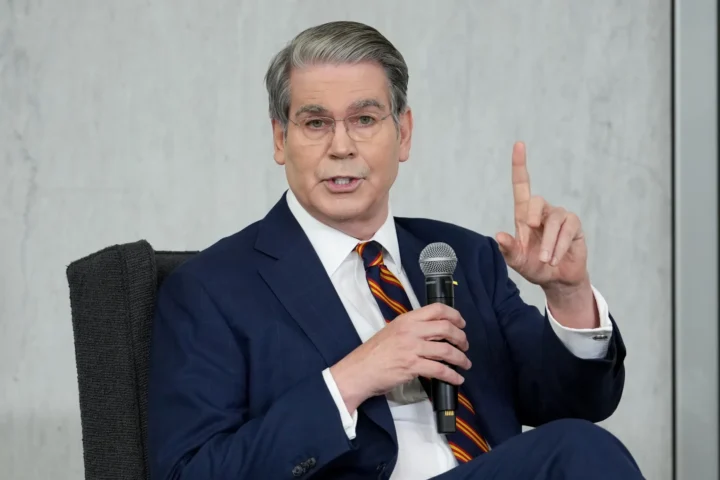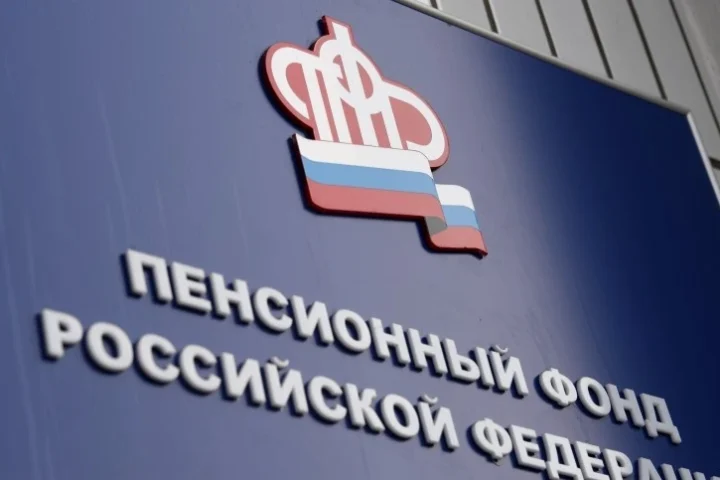On Monday morning, Russia’s Minister of Transport, Roman Starovoit, was reportedly informed that Vladimir Putin had dismissed him from his post. He said farewell to his colleagues, got into his Tesla, drove to a parking lot in Romashkovo near Moscow, and — according to the official version — shot himself with a Makarov pistol. He was 52 years old.
The motive seemed clear. Until May 2024, Starovoit had served as the governor of the Kursk region, where under his leadership, border fortifications had been built. Several of his subordinates were arrested for corruption — the infamous “dragon’s teeth” barriers were already crumbling before Ukrainian forces breached them in the summer of 2024. A disastrous failure in a critical moment. According to the Kommersant newspaper, Starovoit was expected to be arrested.
But strange things began to emerge after his death. A State Duma deputy claimed that Starovoit had actually taken his life “much earlier.” Then, Forbes (U.S.) and Russian outlet RBK cited anonymous security sources who said the former governor had died late Sunday night or early Monday morning. Which raises an unsettling question: did Putin fire a man who was already dead?
Kremlin-linked political analyst Sergei Markov called the incident a staged suicide. He suggested that those who feared Starovoit’s potential testimony after arrest had orchestrated his death. “They are trying to cover up a murder,” Markov claimed.
A Violent Tradition Rooted in Centuries of Russian Power Struggles
The death of officials and political figures in Russia is nothing new. Since the earliest days of Russian statehood, those who challenged authority — or knew too much — have often met mysterious and violent ends. The use of death as a tool of power is deeply embedded in the country’s political culture.
Even in the earliest chronicles, which blurred legend and history, Russian rulers wielded brutal violence. Princess Olga of Kyiv, for example, reportedly had one enemy delegation buried alive in a pit and another burned to death in a bathhouse. This was before the year 1000.
As Russian cities moved away from Kyiv’s influence and fell under Tatar rule, political assassinations became more common. In 1325, Prince Dmitry stabbed Prince Yuri to death in the Tatar capital of Sarai — revenge for Yuri’s earlier murder of Dmitry’s father. These acts were not anomalies but symptoms of how politics operated.
Moscow’s grand princes would later become czars. Ivan V was a minor when his mother, Yelena Glinskaya, ordered her uncle’s eyes gouged out and had him thrown into a monastery. She later died suddenly — likely poisoned.
Her son would be known to history as Ivan the Terrible. A reformer turned tyrant, he wiped out perceived enemies and their families. His notorious oprichniki — a 6,000-man force blending the secret police and death squads — massacred nobles and entire cities like Novgorod. Ivan was the first modern European ruler to systematically suspect and execute his own people en masse. In a rage, he even killed his own son with an iron rod.
Western Europe in the 16th century had tyrants too — England’s Henry VIII executed close allies and two wives. But at least there were trials. In Russia, power remained absolute, and the life of every subject hung by the czar’s whim. Even czars weren’t safe: Peter III was overthrown and killed by officers loyal to his wife, Catherine the Great. Their son Paul I was strangled by conspirators in his bedroom.
Stalin’s Era: Show Trials, Poison Labs, and Mass Terror
After the 1917 revolution, political violence escalated dramatically. The Bolsheviks waged civil war and executed aristocrats, capitalists, and wealthy peasants. Historians debate the number of victims under Stalin’s rule — some estimate three million, others up to twenty million.
Stalin distrusted even his closest allies. He had Nikolai Bukharin sentenced to death in a show trial. In 1940, an assassin drove an ice axe into the skull of exiled rival Leon Trotsky in Mexico.
Since 1921, Soviet intelligence had been developing poisons in secret Moscow laboratories. Author Alexander Solzhenitsyn barely survived an attempted poisoning. Stalin himself was obsessed with the idea that his doctors might kill him.
After Stalin’s (natural) death in 1953, notorious security chief Lavrentiy Beria was executed. Survivors of that era informally agreed: no more killing among themselves. But the broader culture of eliminating dissent lived on.
As French-Russian historian Hélène Carrère d’Encausse has called it — the “Russian syndrome” of political murder still exists. In Russia, human life often weighs far less than political gain.
Twenty-First Century: Windows, Novichok, and Suspicious Deaths
Under President Vladimir Putin, political killings have returned with a modern face. In 2009, Chechen human rights activist Natalya Estemirova was shot dead. In 2015, opposition leader Boris Nemtsov was murdered just steps from the Kremlin.
Between 2000 and 2023, the Committee to Protect Journalists recorded 43 journalists murdered in Russia — the majority of cases remain unsolved.
New poisons have emerged, such as Novichok, designed to kill without a trace. In 2020, opposition leader Alexei Navalny survived a Novichok poisoning, only to die four years later in prison under mysterious circumstances.
Entire new target groups have emerged. In 2016, two former directors of the Russian anti-doping agency died within days of each other, shortly after the state doping system was exposed. Since 2020, at least 17 top managers from Lukoil, Gazprom, and Transneft have died under strange circumstances — many falling from windows.
Russian media blame “chronic stress.” Ukrainian analysts say these executives may have voiced criticism of the war in Ukraine too loudly. Others suspect that a new struggle over corporate kickbacks and corruption streams may be underway.
The most symbolic case was that of Yevgeny Prigozhin — the billionaire warlord and head of the Wagner Group. In August 2023, his private jet crashed just two months after his failed mutiny. In Russia, no Kremlin ruler would tolerate a man who dared raise arms against the capital and survive.
Back to Starovoit: Was There a Motive to Kill Him?
At the time of his death, Starovoit was believed to be close to Arkady and Boris Rotenberg — billionaire brothers who are fixtures of Russia’s state contracting system and long-time judo partners of Vladimir Putin.
Given that, it’s unlikely they would have felt the need to eliminate him — even if he had damaging information. Major anti-corruption probes in Russia almost never reach the top. Just recently, former Deputy Defense Minister Timur Ivanov was sentenced to 13 years for embezzlement, yet his boss — Sergei Shoigu, another Putin loyalist — remains untouched.
Unlike Stalin, today’s Putin does not purge his inner circle. Instead, he maintains a system where loyalty is rewarded, but betrayal — or even failure — can be fatal. In that environment, Starovoit’s suicide seems more plausible than an assassination — especially if he understood arrest was imminent.
No surveillance footage of Starovoit’s final moments has surfaced. But even if he did take his own life, as NZZ points out, it would still be just another chapter in the long, dark saga of Russian political culture — where death remains a tool of control, and fear still rules behind the throne.
This article was prepared based on materials published by Neue Zürcher Zeitung. The author does not claim authorship of the original text but presents their interpretation of the content for informational purposes.
The original article can be found at the following link: Neue Zürcher Zeitung.
All rights to the original text belong to Neue Zürcher Zeitung.


















